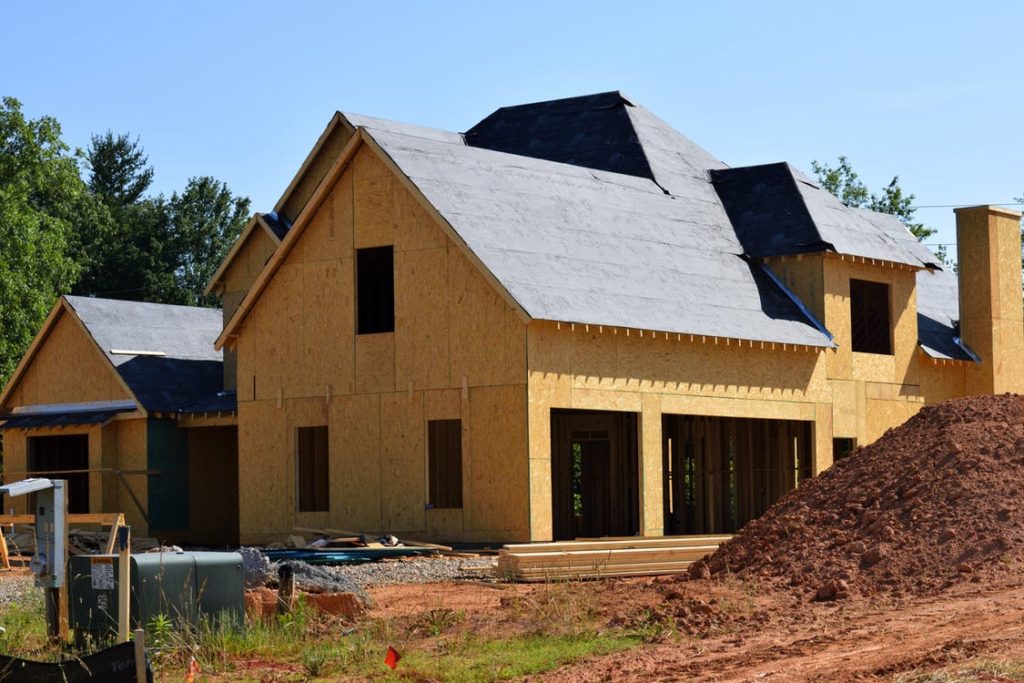
What Can Fashion Learn From the Construction Industry?
The construction industry is widely regarded as having one of the lowest levels of efficiency out of all industries worldwide, as well as being exceptionally slow to implement modern technologies. If you consider the construction of a modern house, you might well conjure up the image of a brick-layer carefully laying mortar before placing each brick into position, very similar to the way it would have been done hundreds of years ago.
The construction and running of buildings is also to blame for around 40% of worldwide greenhouse gas emissions, and it is clear that there is a huge amount that can be improved in terms of sustainability.
Likewise, more and more people are waking up to the fact that the fast fashion industry and its short use and throw-away attitude is unsustainable. So, what can the construction industry teach the fashion world, one of the most fast-moving and cutting-edge sectors, about sustainability?
Prioritizing longevity
In 2010 the Department for Communities and Local Government estimated that over a third of UK housing was constructed before the end of WWII, with only 12% having been built after 1990. Although this survey was conducted ten years ago, the point still stands: houses are built to last.
New build homes now come with a ten-year guarantee as a minimum, while the building materials within generally have a lifetime of over 60 years. Housing insurance has helped to push for greater innovation in this regard, as the providers require not only guarantees from manufacturers but also third-party testing of these goods.
It goes without saying that a vastly more expensive and less frequent purchase of a house, for example, is going to demand greater scrutiny than an item of clothing, however the point stands that placing a focus on increasing the longevity of any item is going to help to mitigate its environmental impact. Currently the vast majority of the fashion industry shirks any sort of responsibility towards the longevity of our clothing; when a top invariably falls apart after only a handful of wears there is often nothing that can be done. If this industry could start to prioritise longevity, this would make a huge difference in sustainable terms.
Creating a “fit for purpose” standard
There is nothing to stop a minimum expectation for how long a new item of clothing should last. Although the 1977 Sale of Goods Act demands that clothing be “fit for purpose”, in reality this rather vague requirement means very little. Perhaps if it could be changed to 10,000 km walked in a pair of shoes or 400 wears of a pair of jeans this might help to stem the tide of fast fashion.
If manufacturers were faced with customers returning items not fit for purpose (with a defined purpose), then it would likely create an economic prerequisite for providing high quality materials, while helping the consumer to understand what “quality” really means in practice.
Life-cycle visibility
Helping consumers to understand the whole-life environmental impacts of their purchases in the simplest terms is vital to increasing responsibility towards their products. In the property industry, Energy Performance Certificates for new homes clearly summarize for homeowners the energy efficiency of their building, as well as providing cost-effective ways to improve the energy rating.
We have seen an increase in full life-cycle analyses of products, taking into account the energy required at every stage of the process – from raw materials through to manufacturing and transportation. Combining it with the recommended washing cycle and likelihood of recycling after use, this would give the total lifetime energy cost of the product.
It would be more than possible to create a life-cycle for every item of clothing. By adding it to labels, along with an A-E rating for water and CO2 on a lifetime or per-use basis, it would give consumers a choice and allow them to compare sustainability at the point of purchase.
Everyone can play their part
Construction manufacturers are becoming increasingly conscious of the environmental impact of their production processes, just as there are clothing companies thinking in similar terms.
However, it’s important to recognize that every single person in the supply chain has the power to make a change within an industry – from the client through to the manufacturer. In the construction industry big clients are starting to demand the use of sustainable construction materials in order to lower the environmental impact of their buildings.
On the manufacturing side, offering more sustainable products can be a risk; the upfront costs may be higher, or a recycled material product may have slightly different properties to what people are used to. Yet, the more that general consumers can vote with their wallets and consider sustainability in their everyday purchasing habits, the more that manufacturers will be forced to offer greater variety.
A personal crusade within a corporate entity can feel arduous, but the tide is beginning to turn, and more and more people are prioritizing sustainability wherever they can in their lives. Make the difference that you want to be seen through every pound you spend, and increasingly the decision to be sustainable will have already been made for you from within corporate headquarters.
Click Link to Learn More: energy efficient buildings
article written by Aidan Bell, co-founder of sustainable materials company Envirobuild.

